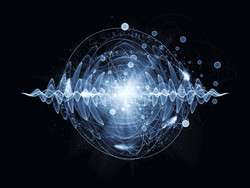Work on pioneering pan-European neutron facility underway

A state-of-the-art facility capable of generating neutron beams 30 times brighter than current facilities is about to be constructed in the Swedish town of Lund. The EUR 1.8 billion will help scientists examine and test new materials at the molecular level, with implications extending beyond nanotechnology, life sciences, pharmaceuticals, materials engineering and experimental physics.
Several hundred members of the European science community were invited to mark the beginning of construction in early October 2014. More than a dozen European countries are funding the project (Sweden, with 35 % and Denmark with 12.5 % are the largest backers). The ESS, which is expected to be fully completed by 2025, will be the most powerful neutron source in the world.
Indeed, the ESS represents a key milestone in European neutron research. While the first neutron sources used for research consisted of nuclear reactors, spallation sources – such as the ESS – are much safer, and produce a much larger quantity of useful neutrons. The facility will therefore place European neutron scientists at the forefront of this pioneering field of research.
The facility will consist of a 600-metre long linear accelerator, which will propel protons that smash with a power of 5 MW into a rotating tungsten target. The protons, travelling at nearly the speed of light, hit the tungsten nuclei and eject neutrons, a process called spallation. These neutrons are then 'cooled', or slowed down, and will ultimately be directed into 44 beam lines.
Because neutrons have no charge, they don't scatter on electrons and can penetrate deep into atoms and probe atomic nuclei directly, something that is not possible with X-rays.
This means that the ESS will open up new research opportunities across multiple disciplines, including, for example, medicine. Scientists will be able to use the facility to advance ongoing investigations into the complexities and unknowns of the human brain, its neural networks and the workings of memory. The neutron facility will also help scientists to better understand the mechanisms of how DNA sustains life at the molecular level, and the precise position, structure and function of the proteins that determine its structure.
For physicists, the ESS will provide an important tool to help solve some of the universe's most enduring mysteries. One enticing possibility, for example, is the eventual reconciling of the incompatible – and yet functional – theories of gravity and quantum physics.
The fact that neutrons can penetrate matter much better than X-rays also makes the ESS interesting for engineering applications. If you want to look into a complete motor block, for example, using neutrons is a much more efficient method.
The centre's research programme is being planned now. Scientists and engineers from more than 60 partner laboratories are already working on optimising the ESS facility, and at the same time are exploring and imagining how it will be used. The ESS will employ a staff of 500 people, with the expectation that between 2 000 and 5 000 scientists will visit the facility every year.
Provided by CORDIS




















